Learning two principles in a fun way: Density and hydrophobicity
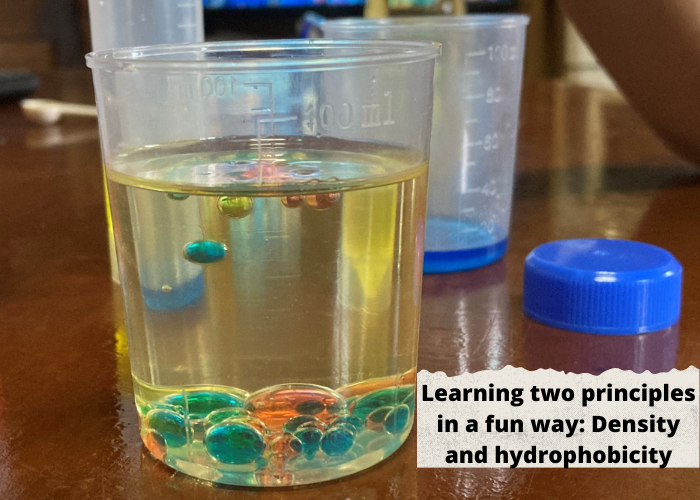
Hello friends,
I was looking forward to Sunday to share with you two experiments for the price of one, based on the same concepts and inspired by a question from my cousin Natalia after she spilled water on the grass.
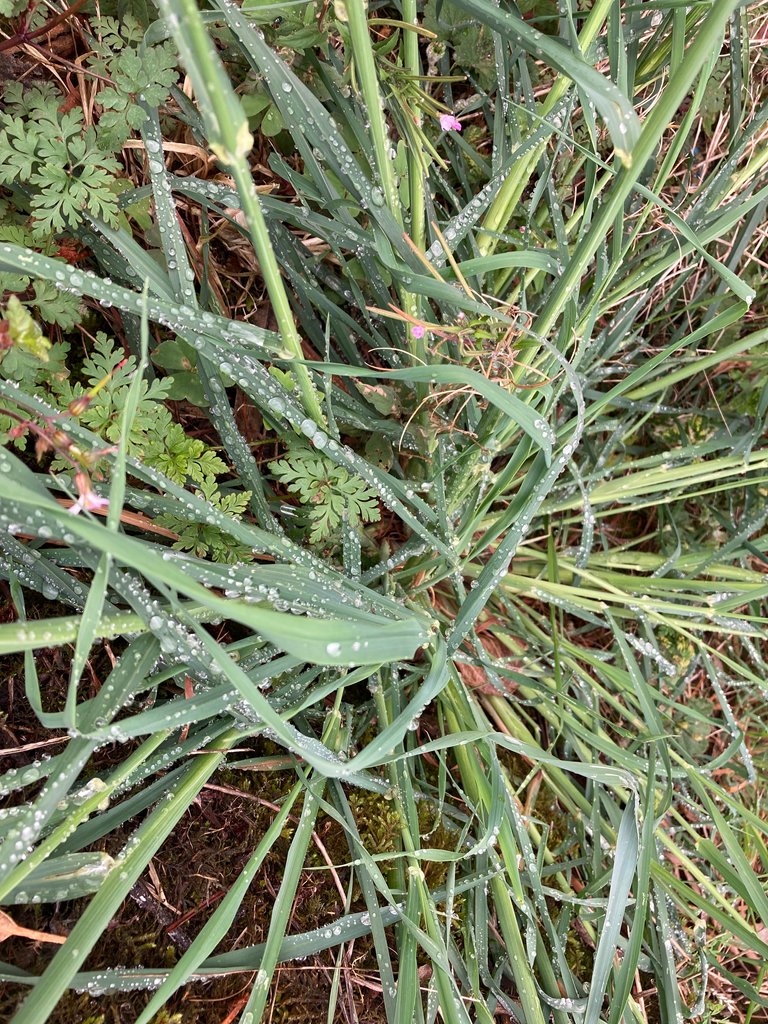
Do you see anything strange?
I suppose not, because our adult eyes have already assimilated certain physical phenomena that occur in nature, but to the eyes of an 8-year-old girl, it caught her attention that the drops of water remained on the leaves of the grass, forming drops, and so I asked myself the following question: Why do the water droplets stay on the surface of the plant and not go all the way into the leaf?
At first I was puzzled, but I remembered from my academic background that there are hydrophilic compounds (they love water) and therefore mix with it, and there are hydrophobic compounds (they hate water) and therefore repel it. So that was my explanation, but looking at my cousin's face I realised that it was a very abstract and theoretical explanation for a young girl, and so I had the idea of doing some experiments playing with this concept of hydrophobicity.
Materials:
Oil
Water
Water-based ink in different colours
Pipette or drop counter
Mixing stick
A beaker
Experiment 1: Coloured beads
In this first experiment we are going to make some coloured beads using the physical principle of hydrophobicity and another physical principle that my cousin asked me about, density.
Step 1: Filling a jar with cooking oil
The first step in this experiment was to fill a beaker with cooking oil, in my case refined sunflower oil because it is cheaper and more transparent.
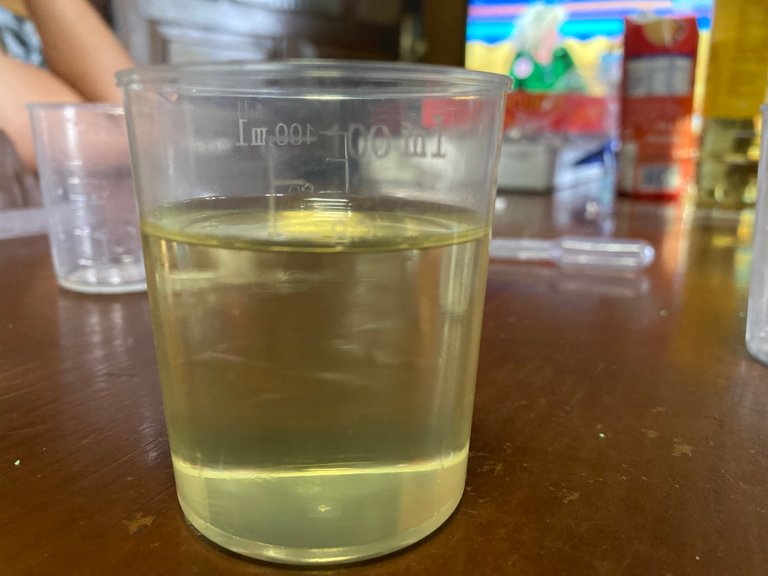
Step 2: Dissolving the dye
In my case we had 3 coloured dyes (red, blue and orange) which we dissolved in water to get 3 solutions of different colours.
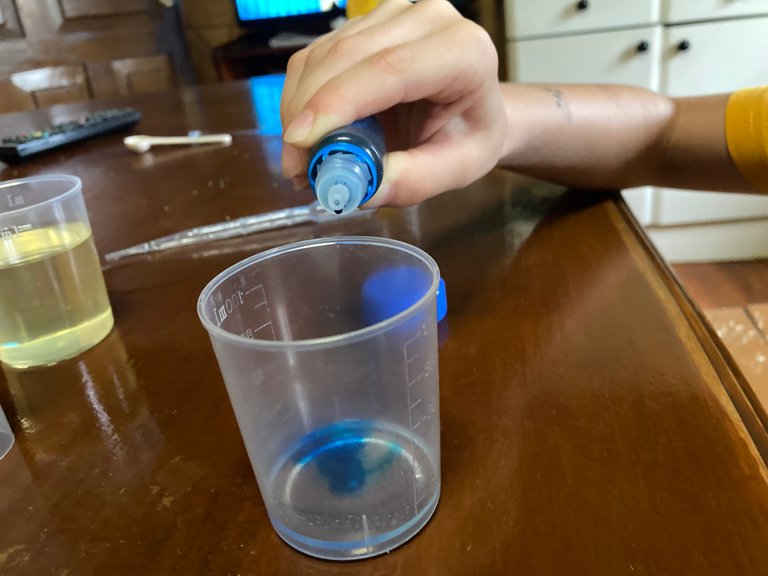

In this case, the water-based dye dissolves in water, so there is no hydrophobicity and what we have is a hydrophilicity for water.
Step 3: Colour drops on oil
When we add drops of dye to the oil, because the oil is hydrophobic, the water drops with the dye do not mix with the oil and form visible coloured beads in the oil.
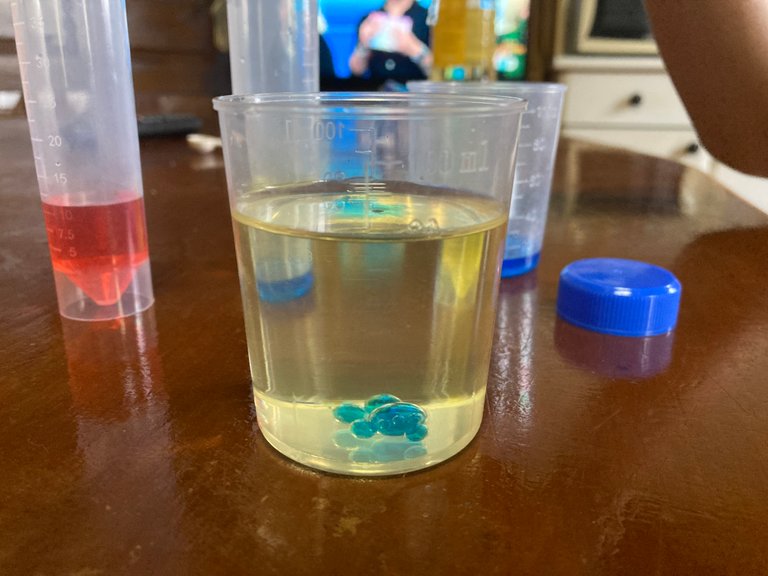
As we add drops of different colours, these drops continue to form pearls that settle to the bottom of the glass.
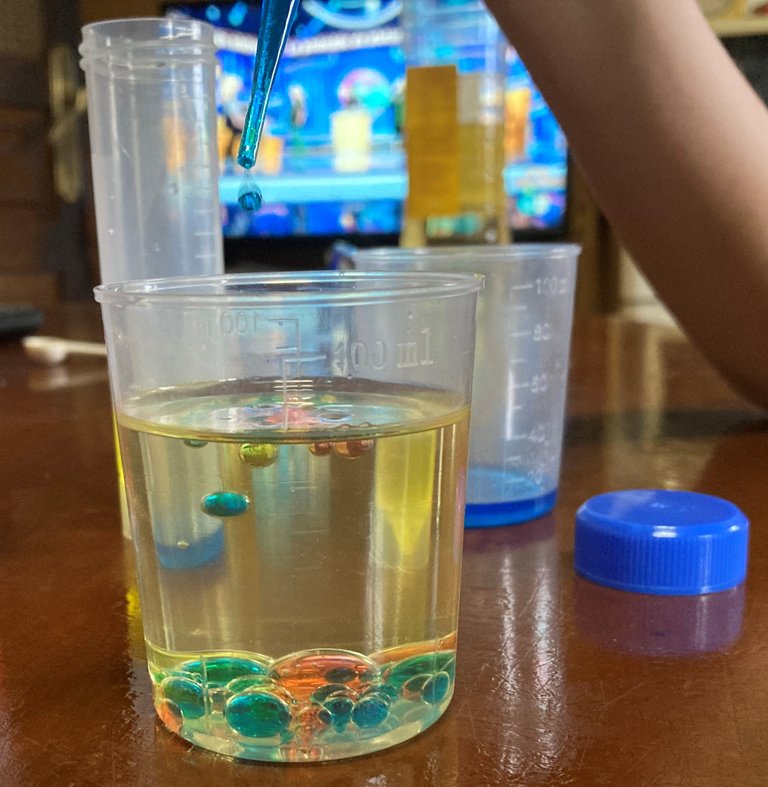
At this point my cousin said to me
Why does the water sink?
I had to answer by explaining that 1 litre of water weighs 1 kg and 1 litre of oil weighs much less than 1 kg. Because the water is heavier, it sinks and the oil floats. The principle of density.
She agreed with me, but she also told me that she thought it was because the drops were too big and that's why they went to the bottom, so I had to do a new experiment, but with smaller drops and reversing the roles a bit.
Experiment 2: Water and oil rainbow
In this experiment we are going to play with the same principles of density and hydrophobicity as in the previous experiment, but in a slightly different way.
Step 1: Water and oil in separate beakers
We are going to fill two beakers with water and oil. In this case we will use more water and less oil.
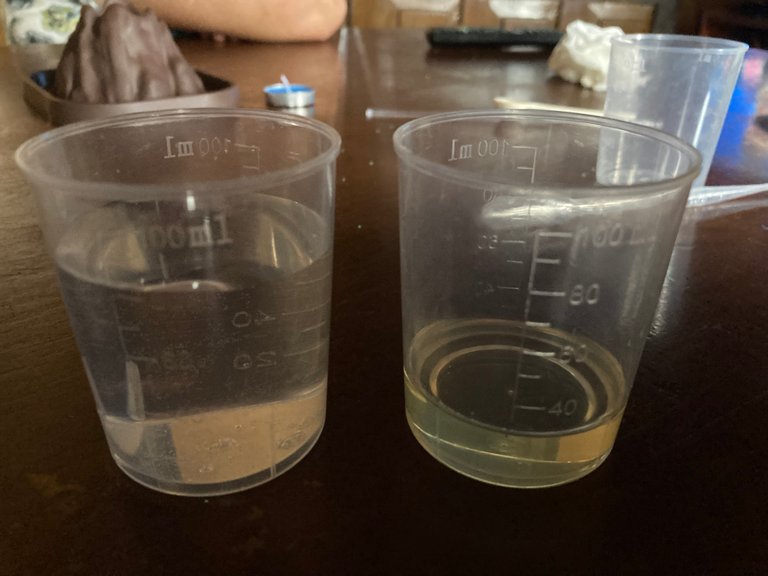
Step 2: Drops of colour in the oil
In this case we will add drops of aqueous dye directly onto the oil, observing that the oil does not mix with the drops due to the principle of hydrophobicity.
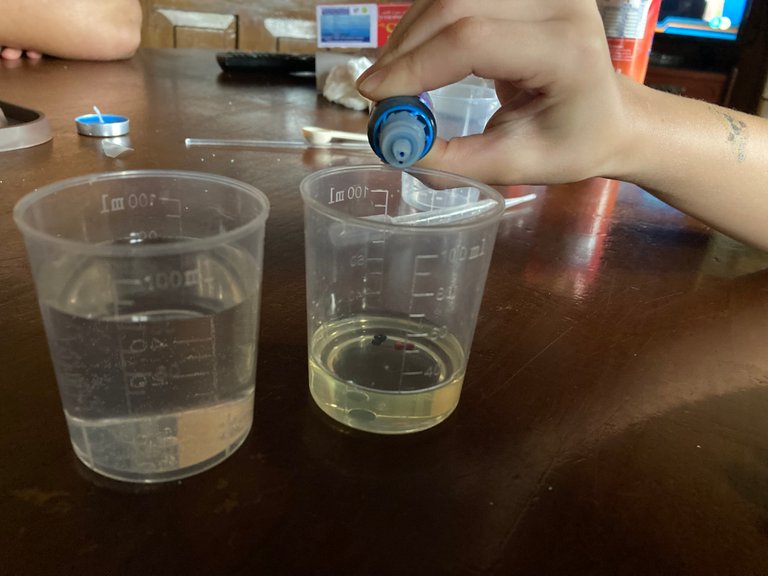
Step 3. Shaking
Using a stirring rod, we will stir the dye into the oil.
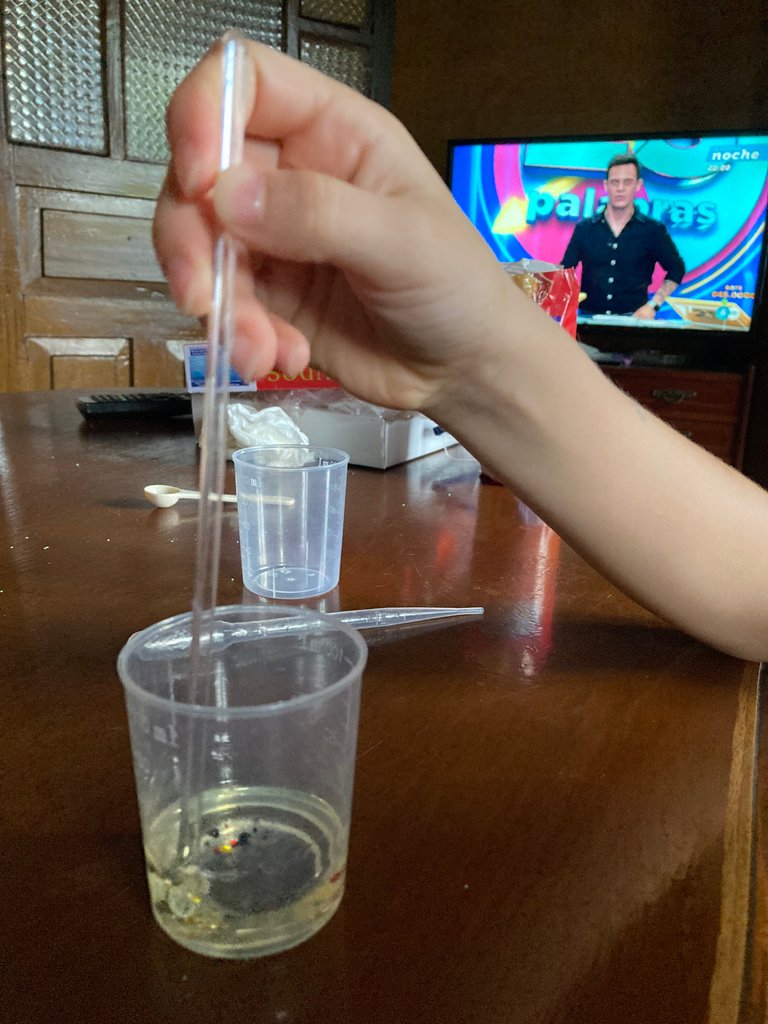
As a result, we will get tiny drops of dye in the oil. In this case, the drops are small.

Step 4: Add the oil to the water
Here the oil will continue to float on the water as the oil is less dense.
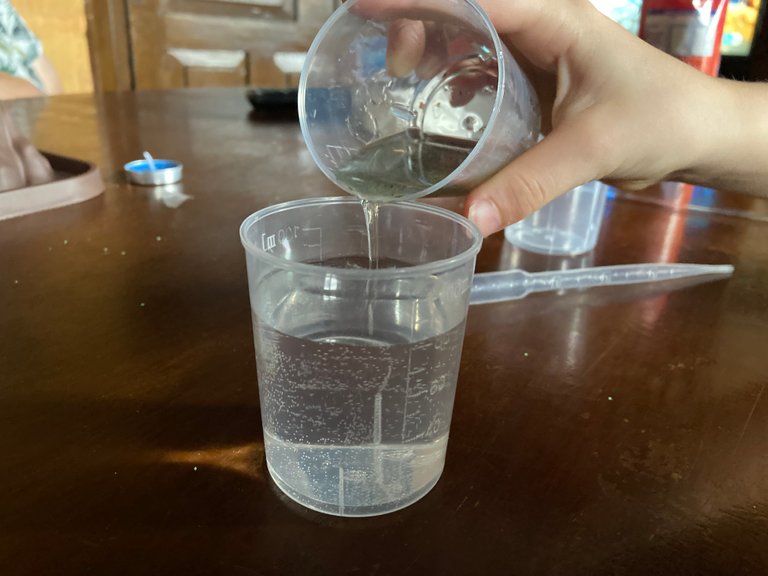
Step 5: Wait a few seconds
You will notice that the tiny, denser drops of colour will sink to the bottom of the oil layer due to their density and not their size, much to my cousin's amazement.

Step 6: A rainbow of colour
The dye droplets will gradually pass through the entire oil layer and reach the water layer, where they will dissolve and form a rainbow of colours.
Lessons learned
Hydrophobicity: There are materials that repel water, such as oil.
Hydrophilicity: Some substances dissolve in water, such as water-based ink.
Density: less dense substances float on top of denser ones.
Remember that physics and chemistry can be fun at any age.
Kind regards.

This post is my participation in the #creative-sunday.

@castri-ja, @pixresteemer(1/10) sent LUV. | connect | community | HiveWiki | NFT | <>< daily
! help(no space) to get help on Hive. InfoCongratulations @castri-ja! You have completed the following achievement on the Hive blockchain And have been rewarded with New badge(s)
Your next target is to reach 16000 upvotes.
You can view your badges on your board and compare yourself to others in the Ranking
If you no longer want to receive notifications, reply to this comment with the word
STOPTo support your work, I also upvoted your post!
Check out our last posts:
Has sido curado por @visualblock / You've been curated by @visualblock
Bienvenidas delegaciones / Delegations welcome
Trail de Curación / Curation Trail
Vota por nuestro Testigo aliado - @hispapro / Vote for our allied Witness - @hispapro
Más información sobre el testigo aquí / More information about the witness here
Gracias
!LUV
@visualblock, @castri-ja(1/3) sent LUV. | connect | community | HiveWiki | NFT | <>< daily
! help(no space) to get help on Hive. InfoNos hemos sentido científicos por unos minutos gracias a tu estupenda publicación. 😁🤗
Gracias
Yay! 🤗
Your content has been boosted with Ecency Points, by @castri-ja.
Use Ecency daily to boost your growth on platform!
Support Ecency
Vote for new Proposal
Delegate HP and earn more
Thanks for your contribution to the STEMsocial community. Feel free to join us on discord to get to know the rest of us!
Please consider delegating to the @stemsocial account (85% of the curation rewards are returned).
You may also include @stemsocial as a beneficiary of the rewards of this post to get a stronger support.